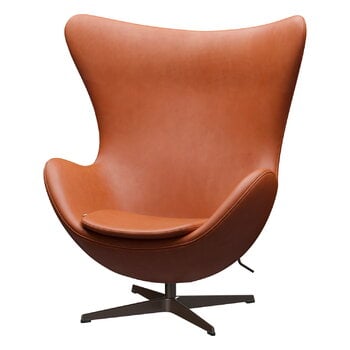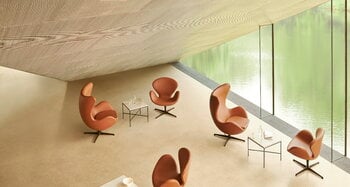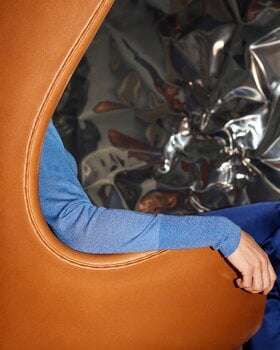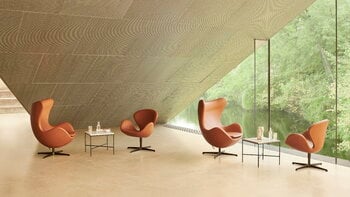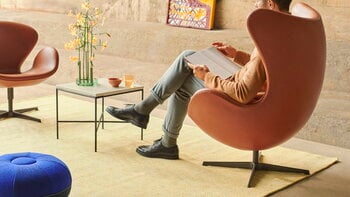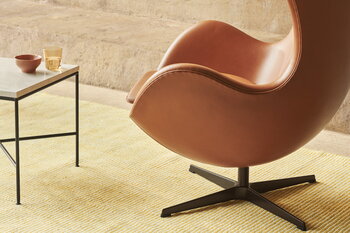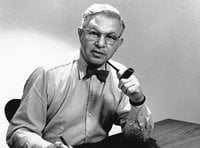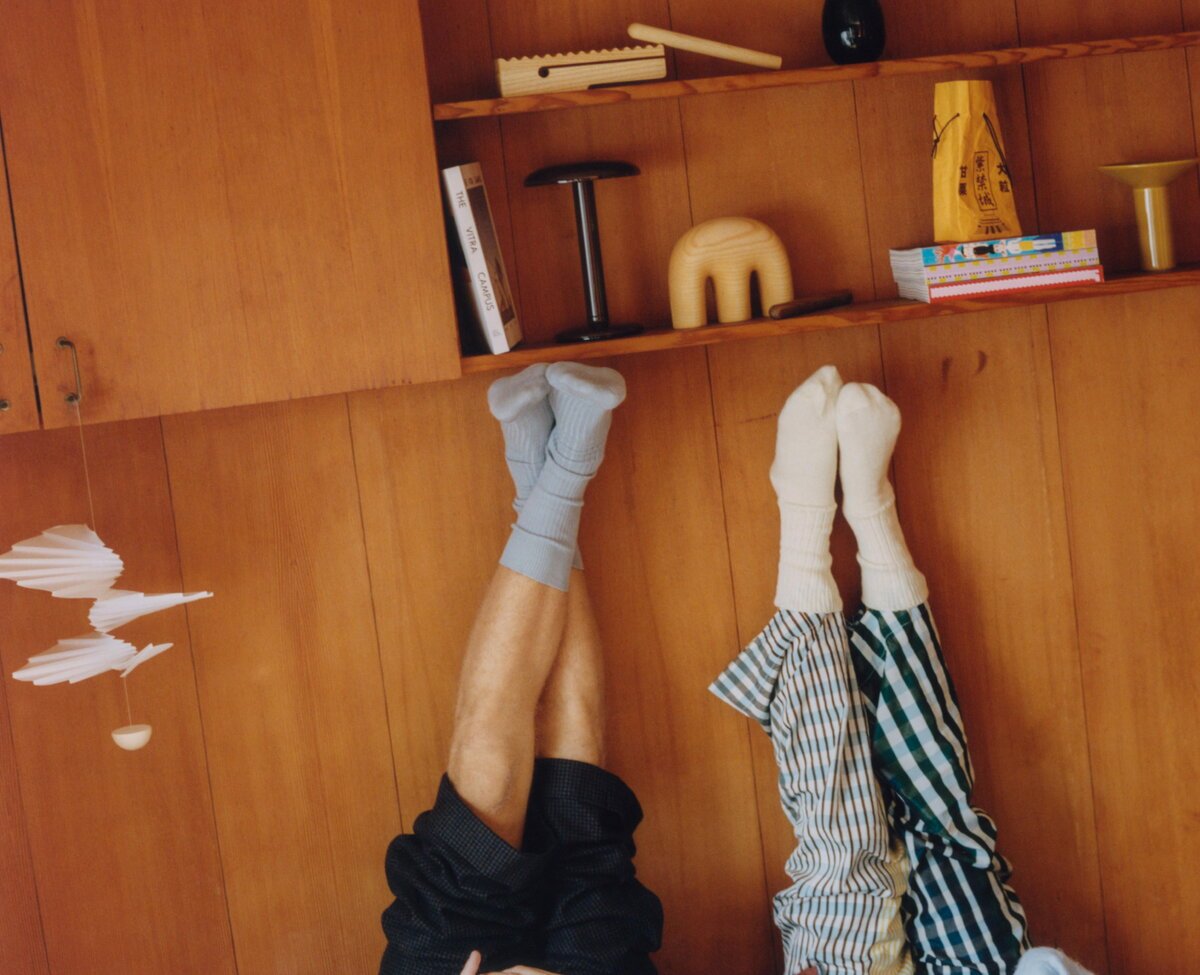Fritz Hansen's Egg chair is a masterpiece by Danish designer Arne Jacobsen, known as one of the most famous classics of Scandinavian design. Designed in 1958, the iconic armchair has a distinctive, eggshell-like shape, achieved through Jacobsen's experiments with plaster and metal wire in his garage. The resulting innovative technique produced the Egg lounge chair that features a strong foam inner shell beneath the upholstery. The chair provides a comfortable and ergonomic seating experience, making Egg the perfect companion for reading, watching TV, or simply just relaxing in its soft embrace.
Also known as 3316, the Egg recliner was originally designed for the lobby and reception areas in the SAS Royal Hotel in Copenhagen. Today, it graces public spaces and private homes around the world. The luxurious leather upholstery and sturdy aluminium leg add a touch of Nordic sophistication to any setting.
